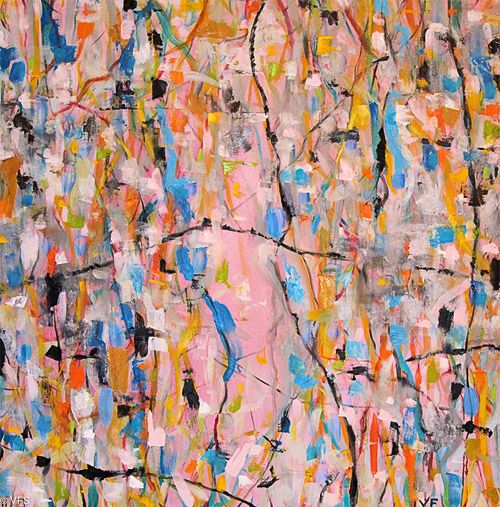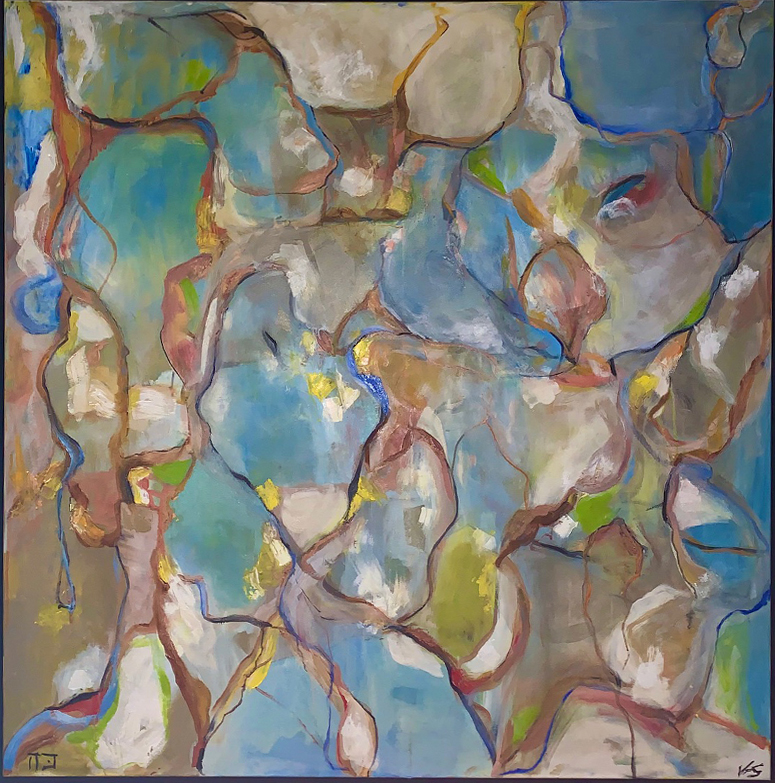
Valerie Feinberg Schweitzer is an award-winning architect and painter. The New York-based artist grew up in Denver and New York City. She obtained a BA from Princeton, where she received from the Philosophy Department the Alexander McCosh Prize and the Class of 1869 Prize in Ethics. She then received her Masters of Architecture with distinction from UCLA’s Department of Architecture and Urban Design. Feinberg Schweitzer has been painting since she was a teenager, when she took classes at the Art Students League of New York and later at the New York Academy of Art. She has managed to show regularly over the past few years, in spite of juggling her duties as mother of two and running her own architecture firm, Valerie Schweitzer Architects. Exhibits include Art Expo NYC (2012), the Westport Public Library in Westport, Connecticut (2013) and the Brooklyn Waterfront Artists Coalition (2017). She most recently displayed her work at The Columbus Art Gallery in Manhattan.

Feinberg Schweitzer’s latest paintings are large abstract oil canvases that span four feet or more in each direction. They have a majestic sweep and curve to them and mix earth tones (off-whites, greys, light browns) with light sky blue, orange and green hues. The influence of Armenian abstract expressionist Arshile Gorky (Garden in Sochi, The Liver is the Cock’s Comb) is evident in works such as Unbound, Opalescent and Snow. In Blue and Ghosts one sees similarities as well between her human outlines and Gorky’s famous 1936 Portrait of the Artist With His Mother, which hangs at the Whitney. These two paintings also somehow recall Matisse in their fluid dance-like positions and vibrant hues. I am personally most enamored of Unbound for its gorgeous, balanced composition and smart use of multiple vivid colors. In Ghosts, by omitting the faces of her figures the artist hints at the irreality or evanescence of the figures depicted. The limpid, loose quality of the line hints at limbs that may not actually be there. Ghosts most clearly lines the boundary between abstraction and realism, between the physical and the spiritual, that was so dear as well to Gorky.

I recently spoke to the artist about her work and her connection to Gorky, whose 116th birthday was April 15.
Christopher Atamian: Your work is stunning. It has a majesty to it. Tell me why you use abstraction or what one might term “semi” abstraction, i.e. a mix of realism and abstraction?
Valerie Feinberg Schweitzer: Gorky once said that he used abstraction to “extract the infinite out of the finite.” I too aim to explode the boundaries of everyday experience so we can get to the deeper reality behind stuff. Abstraction is a way to paint about feelings too. So lines and color describe not just a place or person but the way you feel about that place or person, or memory of them.
C.A.: What are some of the themes or ideas in your work that you’d like to discuss or bring to the attention of Armenian Weekly readers?
V.F.S.: One theme I keep returning to is mental freedom–finding a psychological space beyond limits, which are often self-imposed. I do this pictorially in paintings like Snow, by applying a kind of linear scaffolding, often consisting of black lines. Then color is applied on top of and around this painterly scaffold. So there is this tension between structure, or line, and more amorphous areas of color. Sometimes this “freedom” is represented by portals in the canvas, hollows or gaps that allow the viewer to see beyond the more foregrounded layers of line and color.
C.A.: We’ve texted about the parallels between Arshile Gorky’s paintings and yours. Were you aware of his work early on? Talk a bit about his work and what it means to you.
V.F.S.: I remember as a teenager loving his painting One Year the Milkweed. It struck me as both sad and beautiful at the same time. Unlike Gorky, I am not a survivor of genocide. Yet like him, I do try to channel psychic pain into my work, as a way to deal with and somehow make sense of it, despite its seeming pointlessness.
C.A.: Who are some of the other artists that you admire and who have influenced your paintings, be they architects or painters?
V.F.S.: Well as an architect who loves to paint, I admire greatly other architect-painters, like the modernist Le Corbusier. Seeing His Villa Savoye prompted me to drop out of an art history PhD program and enroll in architecture school. In a sense, the villa reveals a painterly approach to space with its emphasis on defiantly sensuous forms. I also love Post-Impressionist, Pierre Bonnard and the Italian Renaissance painter, Gentile Bellini, who was the son of a draftsman.
C.A.: You are an architect by profession, though you have always painted. How do the two art forms influence each other? Do you see them as separate endeavors or do some of the same ideas and concepts appear in both?
V.F.S: People love to pigeonhole. So I especially like this question. Yes, for me there is no strict divide between painting and designing structures. I think being a painter has helped to sensitize me more to spatial order, rhythm and even the way light plays on a surface. It’s as if painting becomes a tool to help me better enliven a spatial experience or structure. Of course mastering this connection is a lifelong work-in-progress.
C.A.: What are you working on now? Do you have any upcoming shows or anything else that you’d like to point out?
V.F.S.: Right now I am working remotely in an isolated cabin in Long Island. I’m rummaging through scraps of leftover cedar wood from a tree pavilion I designed for a client nearby. I think I can glue the pieces to make 3D wood paintings, though I am not sure what Gorky would think.


Wow, so cool!! Great work!
Fascinating connection between a living artist and one of the greats!
It’s a gift to express oneself in these two artistic endeavors…art and architecture.
This is fantastic. Thank you Chris for shining a light on such talent. And thank you Valerie for sharing your talent with the world.